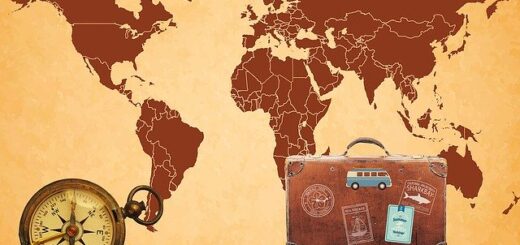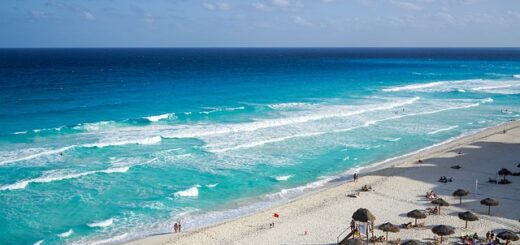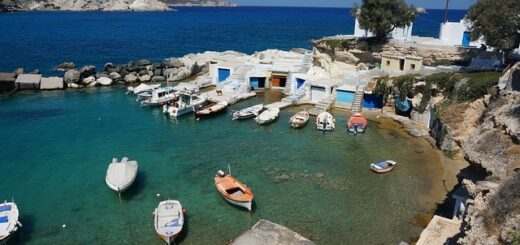Which is best currency for travel?
The most important thing to consider when traveling abroad is currency exchange. Exchanging your currency can be confusing if you’re unfamiliar with the local currency or the exchange rate.
We’ll explore the weakest currency in the world and provide currency exchange tips for travel to help you find the best currency for your next adventure.

Which currency is best for travel?
Choosing the best currency for travel depends on various factors, such as the destination, exchange rates, and your personal preferences. However, a few currencies are widely accepted and will be useful in most countries.
The US dollar is one of the most recognized currencies in the world, and it’s accepted almost everywhere. It’s also easy to exchange and has a stable exchange rate, making it an excellent choice for international travel.
Countries with Lowest Currency in the World
Following are the countries with weakest currency in the world:
Iranian Rial (IRR)
The Lowest world currency isthe Iranian Rial. The country has experienced political unrest and international sanctions, resulting in the downfall of its currency. The unstable economic conditions associated with the Iranian Rial have caused immense challenges for the Iranian people, making it difficult to conduct basic transactions and maintain their daily livelihoods. Currently, 1 Indian Rupee equals 516.79 IRR.
Vietnamese Dong (VND)
The Vietnamese Dong is the currency of Vietnam, and Vietnam is one of the countries with Lowest currency in the world. Vietnam is a popular tourist destination with beautiful beaches, delicious food, and rich history and culture. Currently, 1 US dollar equals 23,520 VND.
Sierra Leonean Leone (SLL)
Leone is the currency of Sierra Leone, a West African nation recovering from a civil war. It is one of the lowest valued currencies in the world, with a high inflation rate and a low exchange rate. Currently, 1 US dollar equals 19,750 SLL.
Lao Kip (LAK)
The Lao Kip is the Loas currency, a Southeast Asian country known for its mountainous landscape and Buddhist temples. However, Laos also has one of the world’s lowest valued currencies, with high inflation rates and a low exchange rate. Currently, 1 US dollar equals 18,433.99 LAK.
Indonesian Rupiah (IDR)
The Indonesian Rupiah is the currency of Indonesia, a country with a developing economy and a large tourism industry. However, the country’s currency is still among the world’s weakest due to low exchange and high inflation rates. Currently, 1 US dollar equals 15,042 IDR.
Uzbekistani Som (UZS)
The Som is the currency of Uzbekistan, a landlocked country in Central Asia. The country has a developing economy, and its currency is considered one of the world’s weakest. Currently, 1 US dollar equals 11,477.21 UZS.
Guinean Franc (GNF)
The Franc is the currency of Guinea, a West African country with a struggling economy and political instability. The country relies heavily on agriculture and mining, and its currency is one of the world’s weakest. Currently, 1 US dollar equals 8,598.38 GNF.
Paraguayan Guarani (PYG)
The PYG, known as the Paraguayan Guarani, is the official currency unit in Paraguay. Unfortunately, the devastating economic collapse severely impacted Paraguay, which has given rise to many challenges, including high inflation, pervasive corruption, a staggering unemployment rate, and an alarming increase in poverty. These interconnected elements have significantly harmed the country’s currency, exacerbating its struggles and undermining its stability and value. Currently, 1 US dollar equals 7,250.33 PYG.
Ugandan Shilling (USH)
The Uganda Shilling replaced the East African Shilling as the country’s official currency in 1966. As time has passed, the Uganda Shilling has experienced a significant decline in value, positioning it among the least valuable currencies today. This depreciation gets attributed to a series of tumultuous events that evolved in Uganda, particularly under the rule of Idi Amin. Currently, 1 US dollar equals 3,699.68 Ugandan Shillings.
Iraqi Dinar (IQD)
The official currency of Iraq is the dinar, which is printed and regulated by the Iraqi Central Bank. The dinar divides into smaller units known as fils, with a denomination of 1,000 fils per dinar. However, due to the inflation that began in 1990, the fils have gradually become obsolete and hold minimal value in practical transactions. Currently, 1 US dollar equals 1,309.99 Iraqi dinars.
Which country has the cheapest currency?
Iran currently has the world’s cheapest currency. Several factors, such as political instability, economic sanctions, and hyperinflation, have impacted the Iranian Rial (IRR). As of 2023, 1 Indian Rupee (INR) equals 516.79 IRR.
The value of the Iranian Rial has been on a steady decline for years, with its exchange rate reaching historic lows. The country’s economy heavily depends on oil exports, which international sanctions have negatively impacted. It has led to a shortage of foreign currency reserves, impacting the country’s ability to import goods.
The weakening of the Iranian currency has also led to significant challenges for its citizens, who are struggling with the rising cost of living and inflation. Many people get forced to rely on black market exchange rates to purchase goods and services.
How to exchange currency while traveling?
Following are some currency exchange tips for travel:
Research Exchange Rates
Researching exchange rates before traveling is essential to help you plan your budget effectively and avoid unpleasant surprises. By researching the exchange rate of the country you’ll be visiting, you can understand how much your currency will be worth in the foreign country’s currency.
This information will help you to determine how much money you’ll need to bring with you, what expenses you’ll be able to afford, and whether it’s more cost-effective to exchange your money before or after arriving in the country. It’s also important to remember that exchange rates are subject to change, so staying up to date with the latest exchange rates can help ensure that you’re getting the best value for your money.
Use ATM’s
ATMs are widely available in most countries worldwide and offer a convenient way to withdraw cash while travelling. Not only are ATMs convenient, but they also provide some of the best exchange rates for foreign currency transactions. However, before using your ATM card overseas, you must check with your bank about any international transaction fees that may get imposed.
These fees depend on the bank, including foreign transaction fees, foreign ATM fees, and currency conversion fees. Understanding these fees before you travel is essential to factor them into your budget and avoid unexpected charges. Look for ATMs in your bank’s network to avoid surcharge fees. By using ATMs strategically and understanding the associated fees, you can save money while travelling and have peace of mind knowing that you’re getting the best exchange rates possible.
Avoid Exchange Counters at Airports
Airport exchange counters offer poor exchange rates and high service fees, which can significantly affect your travel budget. Because airport exchange counters have a captive audience, they can charge higher fees and offer lower exchange rates.
As a result, it’s best to avoid exchange counters at airports and opt for alternative currency exchange methods, such as withdrawing cash from an ATM or exchanging money at a bank or reputable currency exchange provider.
Doing so can ensure that you’re getting a fair exchange rate and avoid unnecessary fees. Additionally, planning before your trip and researching the best currency exchange options available at your destination is essential to ensure you get the most value for your money.
Use Credit Cards
Credit cards are a popular payment option for international travellers due to their convenience and security features. You can carry large amounts of cash or exchange money at unfavorable rates with a credit card. However, it’s essential to be aware that most credit card issuers charge foreign transaction fees and currency conversion fees on purchases made outside your home country.
These fees can add up quickly if traveling for an extended period or making frequent transactions. To avoid these fees, use credit cards with low or no foreign transaction fees or other payment options such as cash or traveler’s checks. Additionally, before using your credit card abroad, notify your issuer of your travel plans to prevent any unexpected holds or fraud alerts on your account.
Exchange Currency in Local Banks
When it comes to exchanging currency, local banks can be a great option as they often offer competitive exchange rates comparable to those found at other currency exchange businesses. However, before heading to a local bank to exchange currency, it’s essential to remember that they may ask for identification, such as a passport or driver’s license, to complete the transaction.
Additionally, you should have some cash on hand in the currency you wish to exchange, as some banks may not have large amounts of foreign currency readily available and may require time to order it. Despite these minor inconveniences, exchanging currency at a local bank can be convenient and cost-effective for travelers needing foreign currency.
Final Words
Determining the best currency for travel requires research and planning. While some countries may have the lowest-valued currencies in the world, you must consider other factors, such as exchange fees.
By following currency exchange tips for travelers and researching exchange rates, you can ensure enough local currency for a smooth and hassle-free trip. Now you know which is best currency for travel go ahead and check out other travel guides to plan your upcoming vacation.



















